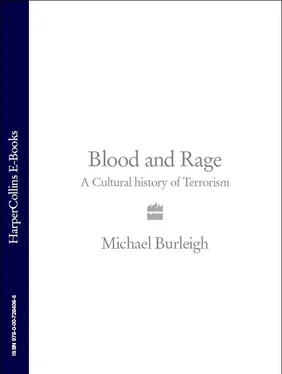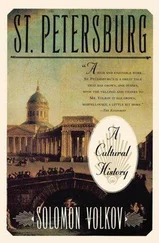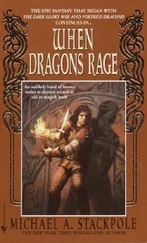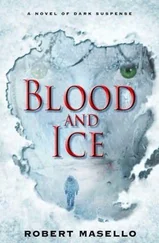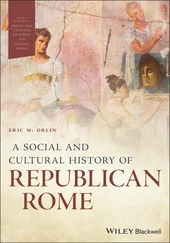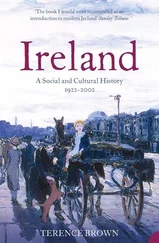Both Rossa and the Clan embarked on campaigns of terror, using Irish-American bombers rather than British- or Irish-based Fenian sympathisers who were thought to be too susceptible to penetration by British detectives and secret agents, some of whom like Henri le Caron operated across the Atlantic. 12
These were not random attacks against high-profile individual human targets, but campaigns with their own rhythm of multiple successive strikes whose object was to spread fear and panic. Their opening target was chosen for its symbolic value: an army barracks in the town where three Irish martyrs had been hanged. On 14 January 1881 Rossa’s bombers struck in dense fog at Regent Road Barracks in Salford, although the bomb placed in a ventilator shaft in the wall did most damage to a neighbouring butcher’s shop and a rope factory where a seven-year-old boy was slain. Further attacks in February were foiled when police raided a steamer named the SS Malta , with a cargo of cement from New York, in whose hold they found cases containing six bombs fitted with clockwork detonators. Three months later an alert policeman extinguished the burning fuse of a blasting-powder-based bomb placed in a recess below the Egyptian Hall in London’s Mansion House. In May, a crude pipe bomb caused minimal damage to Liverpool’s police headquarters. A month later, two of the bombers were caught after they left a bomb built into a cast-iron gas pipe outside the town hall in the same city. Some brave policemen dragged it down the steps of the town hall just before it exploded. The two Fenian bombers received sentences of life and twelve years’ imprisonment. The sole other success the police enjoyed was to discover a Fenian arms dump in a stables which a Mr Sadgrove had rented from a Swiss watch maker in Clerkenwell. This contained four hundred rifles, with shamrocks embossed on their stocks, sixty revolvers and about seventy-five thousand rounds of ammunition. Sadgrove, or John Walsh as he was called, was sentenced to seven years’ penal servitude. Although the lethal effects of Rossa’s campaign were minimal, it added to the horror occasioned by the murders in Phoenix Park of lord Frederick Cavendish and Thomas Burke, senior members of the Dublin administration, who were slashed to death with twelve-inch surgical knives by a gang called the Irish Invincibles, and ensured that the general public were stricken with anxiety and terror. They had good reason because Rossa’s shambolic Skirmishers were about to be augmented by killers with a more professional approach, although the irrepressible Rossa helped fund them. His newspaper the United Irishman openly solicited donations to terrorism, sometimes publishing donor letters: ‘Dear Sir, Inclosed [sic] find $3; $2 for my yearly subscription for “the United Irishman”; and $1 for dynamite. I think it the most consistent remedy for old tyrant England. Wishing you and the “United Irishman” success, I remain, etc. Thos. O’Neill.’
More substantial funds came from the US Clan leader, a Chicago lawyer called Alexander Sullivan, who simply redirected some of the impressive sums which Irish-Americans had given to the Irish Land League’s rural activities. A rock of a fellow, always armed and wearing cowboy boots, Sullivan had earlier killed a man who called his wife ‘a tool of Jesuits’ and had subsequently shot and wounded a political rival in New Mexico. Despite this background, Sullivan reinvented himself as a lawyer with vice-presidential ambitions in any party that would have him. Rossa and Sullivan effectively ran parallel campaigns of terror, although the sources of funding and some of the personnel overlapped. 13
Rossa’s men struck first in late January 1883 in Glasgow. Two large bombs destroyed a gasometer in the city gasworks, causing considerable damage to neighbouring industries and injuring eleven people. In the early hours of the following day, late-night revellers happened upon a bomb designed to bring down a stone aqueduct carrying the Forth and Clyde Canal over a road. An off-duty soldier poked around in an oval bonnet box made of tin which erupted in his face. The bombers moved to London.
Seven weeks later, a policeman discovered another bonnet box, this time behind the offices of The Times newspaper in Playhouse Yard. He managed to kick it away, causing the crude lignine bomb to malfunction. Shortly afterwards, just as Big Ben was striking nine, a massive explosion went off amid new government buildings in Parliament Street. These buildings and the headquarters of the Metropolitan Police ‘A’ Division looked as if they had survived a major riot. Gladstone appeared next morning to survey the scene. Policemen were stationed at all key buildings and guarded key public figures. A new Irish Special Branch, under chief inspector ‘Dolly’ Williamson, and dedicated to Fenian terrorism, was established in a small building at the centre of Great Scotland Yard, a warren of narrow streets and courtyards off the east side of Whitehall where the Metropolitan Police still stable horses. On 21 May The Times published a letter from ‘a considerate dynamiter’ warning that ‘thousands, perhaps millions, of your innocent citizens, before another April comes around, will be no more’. Writing from Colorado, the correspondent advised the British to evacuate women and children before the Fenian bombers returned. 14
The weakest link in Rossa’s campaign was that his explosives were being smuggled into Britain on American ships bound for Cork or Liverpool, a procedure that gave the watching police their biggest breaks. The next wave of bombers, despatched by Sullivan’s Clan rather than Rossa, resolved to manufacture their bombs in England, to avoid having to run the gauntlet at Irish and British ports where security had been stepped up. Their leader, Dr Thomas Gallagher, visited Britain in the guise of an American tourist in 1882. From a large family of Irish immigrants, Gallagher had worked in a foundry as a teenager, studying medicine in his spare time. He had the natural authority of a healer in his part of Brooklyn, while his studies had also involved the chemistry needed to make bombs.
Gallagher sent one Alfred George Whitehead – or Jemmy Murphy, to give him his real name – to England to establish a cover for a bomb factory. Whitehead rented a shop in the Ladywood district of Birmingham, where he set up a phoney paint and decorating business, with £10 of brushes and wallpaper on display for customers. This cover enabled him to purchase large quantities of chemicals, whose odour would be masked by that of oil and paint. Alert suppliers began to wonder about the quantities of pure glycerine Whitehead was buying, and noted his Irish accent, stained fingernails and acid-bitten clothes. Undercover police officers began to purchase brushes and wallpaper, finally breaking into the shop at night to take samples of the chemicals littered around. They noticed that acids burned holes in their socks. The most ominous clue was a coat with the label Brooks Brothers, Broadway, New York, then and now a famous US clothing firm.
Although they had the bomb master under surveillance, the police had no clue to the identity of the bombers. Gallagher had recruited them the previous year from young men who belonged to New York’s many Fenian clubs, with names like Emerald Club or Napper Tandy. Gallagher himself sailed to Britain, together with his alcoholic brother Bernard, whom he left in steerage. Gallagher was carrying $2,300 and a letter of credit for £600. He and his bombers made trips from London to Birmingham to pick up Whitehead’s explosives. Despite the doctor’s clear instructions, the less bright members of his team imagined that one could pour nitroglycerine into a bag or trunk without the need for rubber bags inside. On one occasion, eighty pounds of nitroglycerine were poured into two fishing waders, which, tied off at the knees, were then taken to London in a portmanteau. Station and hotel porters buckled under the weight, speculating that the case contained gold sovereigns or iron bars. The police followed the bombers from Birmingham to London and then pounced to effect their arrests. Whitehead was detained in his bomb factory. The entire cell were sentenced to life imprisonment. In another triumph for the authorities, some ten Glasgow ‘Ribbonmen’ (violent Catholic nationalists who wore green ribbons) and two of their Irish-American recruiters were convicted in December 1883 of the Glasgow bombing campaign. A more stringent Explosive Substances Act put the onus of proof that possession of certain chemical compounds or actual explosives was entirely innocent upon the person caught with these substances.
Читать дальше
